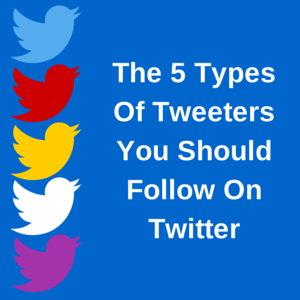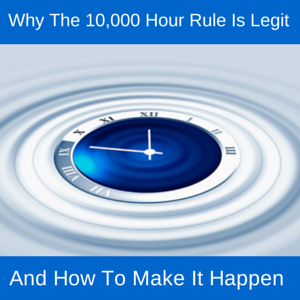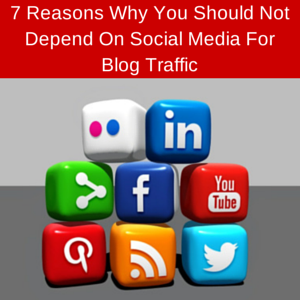
Pinterest is a rapidly growing social network, and many businesses and entrepreneurs are utilizing it to grow their presences on the web. Some businesses send out pins that are routinely seen by millions of people. Others are approaching that stage and are using Pinterest to bring in more blog traffic than ever before.
The key to getting more blog traffic from Pinterest is to make your pins spread as far as possible. You want your pins to appear on numerous boards and to appear close to the top on Pinterest’s search engine for your keywords. If you want your pins to reach out to more people, follow these six tips.
#1: Optimize your pictures.
Before you pin something on Pinterest, you need to make sure this is the type of picture that would get repinned often. The pictures that get repinned more often are the taller pictures. Having multiple colors in one picture, a 50% color saturation, less than 10% background, no faces, and smooth textures all boost your chances of getting more repins on Pinterest.
There are free online editors that make it easy to utilize color saturation, and if you are in the search for a tall picture, you can create one with PowerPoint or KeyNote by changing the dimensions of the presentation. Optimizing your pictures is important regardless of the size of your audience. Even if you only have a few hundred followers, you can still get thousands of repins. When I only had 500 followers, one of my pins got liked and repinned over 1,000 times.
The people who repinned that particular pin allowed their audiences to see the pin. As more audiences of different sizes got to see the pin, I experienced a skyrocket in repins even though I did not have a large audience at the time. Do not wait for the moment when you have a large audience to optimize your pictures. Optimize them now.
#2: Use hashtags
Ever since hashtags became very successful on Twitter, numerous social networks have adopted them. Pinterest is one of the social networks that utilizes hashtags, and just as they are significant on Twitter, hashtags are also significant on Pinterest. Hashtags boost the SEO of your pins on Pinterest’s search engine.
When someone clicks on the link to a hashtag, they are brought over to a page containing recent and popular pins containing that hashtag. If you use this hashtag in many of your pins, the people who click on the hashtag will be brought to a page that displays numerous pins, and most of them would be yours. Giving your followers another chance to see your pins will allow you to get more repins.
#3: Pin often
The more times you pin, the more people get to see your content. This method may sound like common sense, but it is a method that few people implement. Most of the time people spend on Pinterest is spent by surfing the site and not pinning any new content. Surfing Pinterest used to eat up a lot of my time which is why, with 10,000 followers, I temporary abandoned my account. No new pins came in for a while, and my traffic from Pinterest at the time was nonexistent.
Even with 10,000 followers at the time, there were some people with 500 followers getting more traffic from Pinterest than I was. Looking back, all I can wonder was what was I possibly thinking. Now I send out three pins every day, and those three pins get repins, likes, and lead people to my blog.
Some of the experts recommend pinning 10 times every day. One day, I decided to give it a try, and I got a dramatic increase in repins, likes, and blog traffic from Pinterest.
It is important to note that pinning often does not mean sending out 50 pins in five minutes and then not sending anything else out for the rest of the day. Sending pins at this frequency will annoy the followers who see them, and the people who log in 30 minutes later will not see any of your pins for the entire day.
You need to schedule your pins in advance so they can get sent out throughout the day. On a typical day, I pin at 2 pm, 4 pm, and 8 pm. I spread my pins throughout the day because I am not annoying my followers, and I am accounting for different time zones throughout the day. I schedule my pins with ViralWoot which is a free service. The free version only allows users to schedule 100 pins every month, but upgrades are available.
#4: Interact with your audience
Interacting with your audience will allow you to develop stronger connections. These people may promote your content on a normal basis. Some of the people who I interacted with on Pinterest continue to share my content, and it all started with me saying, “Thank you for sharing my content,” or something similar.
The more you interact with someone, the more that person will trust and remember you. Some of the people you interact with may decide to tell their friends about you. Some of those friends may decide to follow you on Pinterest and tell their friends about you. In this case, word of mouth marketing allows more people to know about you, and it all started with a conversation you had with one of your followers.
#5: Repin other people’s pins
Although most of the pins on your boards should be yours, it doesn’t hurt to repin someone else’s pin. When you repin someone else’s pin, you are adding content to your boards for your followers to see. In addition, the person you repinned may decide to repin and/or like one of your pins in return.
As you repin more of other people’s pins, these people may decide to promote you to their followers. If these people are not following you, some of them may decide to follow you after getting the notification that you repinned one of their pins.
You can also repin the pins your followers send. Doing this will make the follower happy to be following you, and that follower will be more likely to repin one of your pins. That follower may remember you when having a conversation with a friend. Then, your messages reaches out to another person.
#6: Promote your pins on your other social networks
There is nothing wrong with promoting a pin or board on another social network. Facebook makes it easy to promote what you share on Pinterest, and you can get some of your friends to like and repin your content. Out of all of the social networks, you have the biggest advantage on Pinterest when other people, even a few friends, repin your pins.
It is important to remember that people are highly addicted to Pinterest. That means someone who has 100 followers could potentially get 10 repins if they pin a nice looking image. On other social networks such as Twitter and Facebook, getting those same statistics is close to impossible. That means even if your friends only have 50 followers on Pinterest, they could potentially get anywhere from 2-5 repins. If you get 10 of your friends to repin one of your pins, your pin can get an extra 20-50 repins from your friends’ audiences. Then, those repinners have audiences of their own. That’s how one of my pins was liked and repinned over 1,000 times even when I only had 500 followers.
The only way you get those initial repins that start the chain reaction is by promoting your pins on your other social networks and growing your audience along the way.
In Conclusion
In order to be successful on Pinterest, you need to get numerous people to see your pins and share them with their audiences. Implementing these six tips will make that type of interaction happen more often. With any success, getting your pins in front of thousands of people takes patience, but after you reach that point of being seen by thousands of people, that patience will be worth it.
Do you have a 7th tip for giving your pins more exposure?




